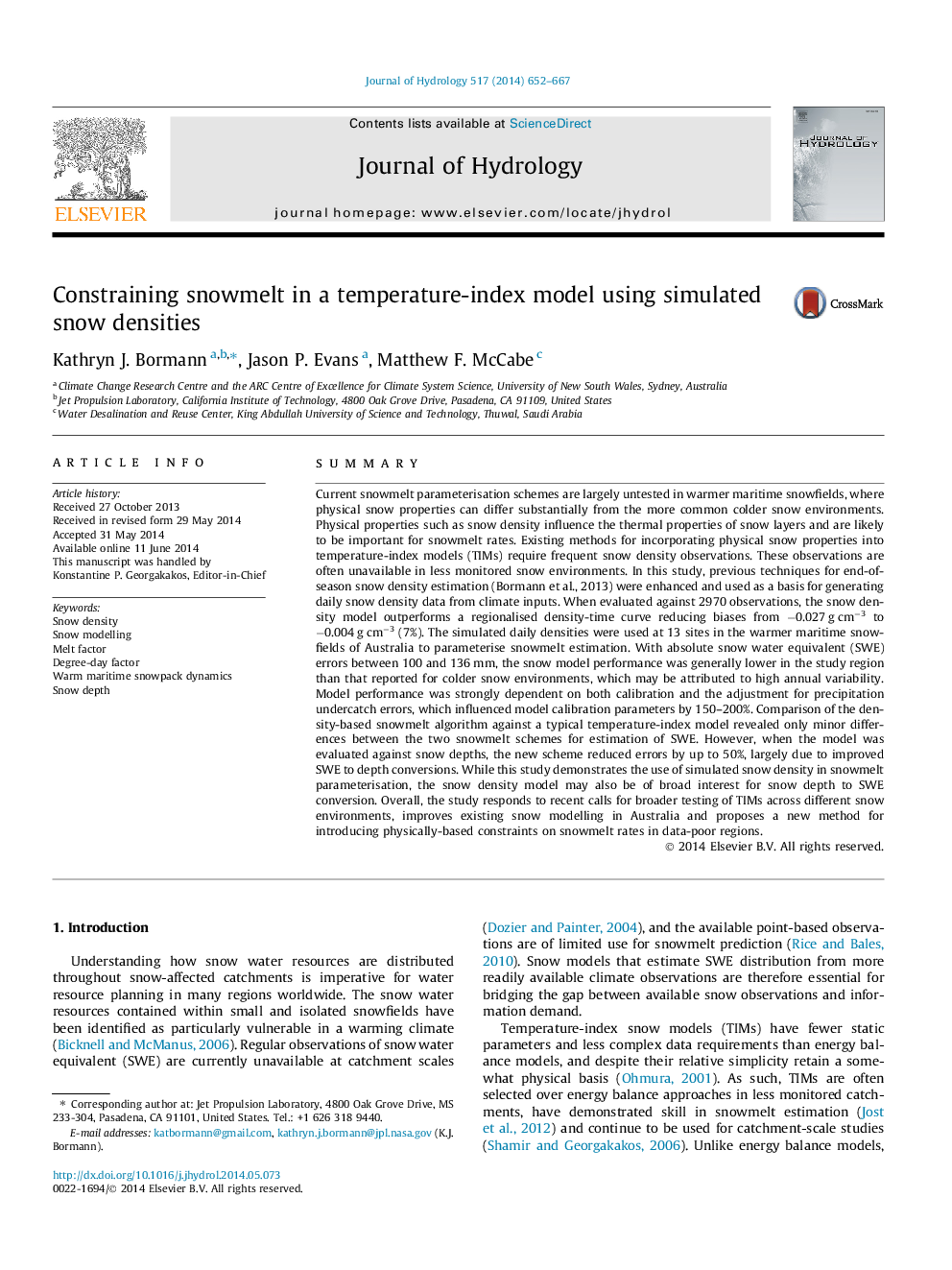| کد مقاله | کد نشریه | سال انتشار | مقاله انگلیسی | نسخه تمام متن |
|---|---|---|---|---|
| 6413007 | 1629931 | 2014 | 16 صفحه PDF | دانلود رایگان |
- Daily snow densities are generated from seasonal climate inputs using a new algorithm.
- Choice of snowmelt scheme in warm snow climates is less important than other factors.
- Improved SWE-depth conversion reduced snow depth errors by up to 50% across 13 sites.
SummaryCurrent snowmelt parameterisation schemes are largely untested in warmer maritime snowfields, where physical snow properties can differ substantially from the more common colder snow environments. Physical properties such as snow density influence the thermal properties of snow layers and are likely to be important for snowmelt rates. Existing methods for incorporating physical snow properties into temperature-index models (TIMs) require frequent snow density observations. These observations are often unavailable in less monitored snow environments. In this study, previous techniques for end-of-season snow density estimation (Bormann et al., 2013) were enhanced and used as a basis for generating daily snow density data from climate inputs. When evaluated against 2970 observations, the snow density model outperforms a regionalised density-time curve reducing biases from â0.027 g cmâ3 to â0.004 g cmâ3 (7%). The simulated daily densities were used at 13 sites in the warmer maritime snowfields of Australia to parameterise snowmelt estimation. With absolute snow water equivalent (SWE) errors between 100 and 136 mm, the snow model performance was generally lower in the study region than that reported for colder snow environments, which may be attributed to high annual variability. Model performance was strongly dependent on both calibration and the adjustment for precipitation undercatch errors, which influenced model calibration parameters by 150-200%. Comparison of the density-based snowmelt algorithm against a typical temperature-index model revealed only minor differences between the two snowmelt schemes for estimation of SWE. However, when the model was evaluated against snow depths, the new scheme reduced errors by up to 50%, largely due to improved SWE to depth conversions. While this study demonstrates the use of simulated snow density in snowmelt parameterisation, the snow density model may also be of broad interest for snow depth to SWE conversion. Overall, the study responds to recent calls for broader testing of TIMs across different snow environments, improves existing snow modelling in Australia and proposes a new method for introducing physically-based constraints on snowmelt rates in data-poor regions.
Journal: Journal of Hydrology - Volume 517, 19 September 2014, Pages 652-667
